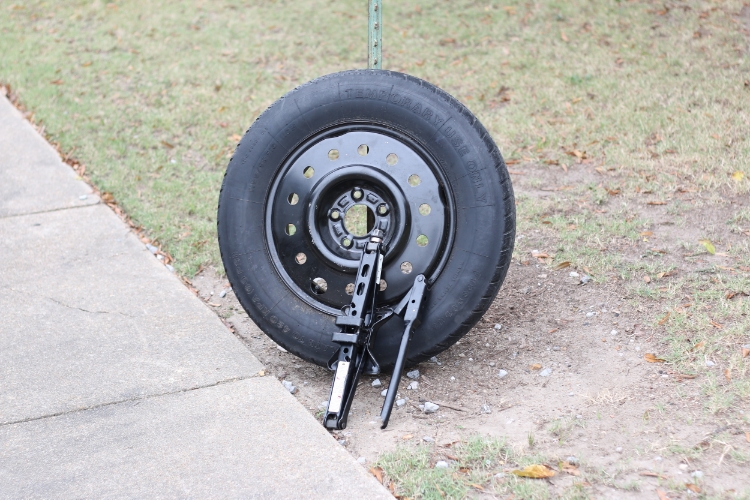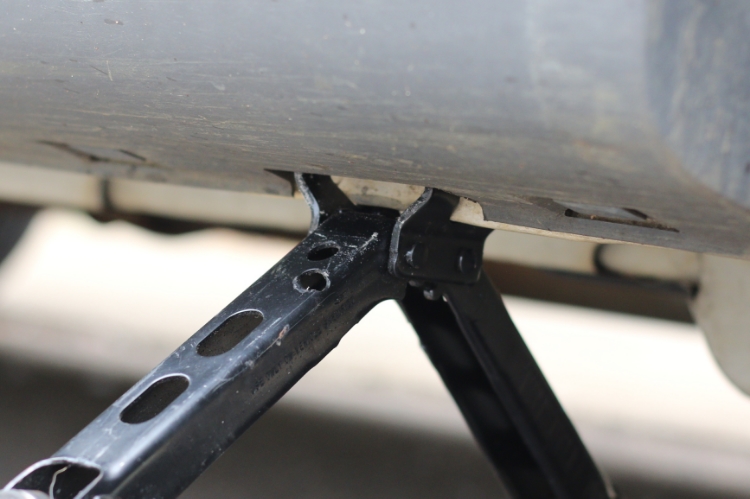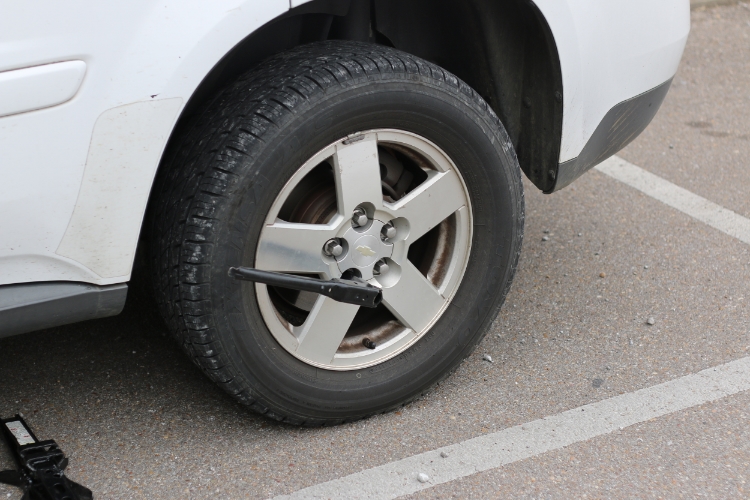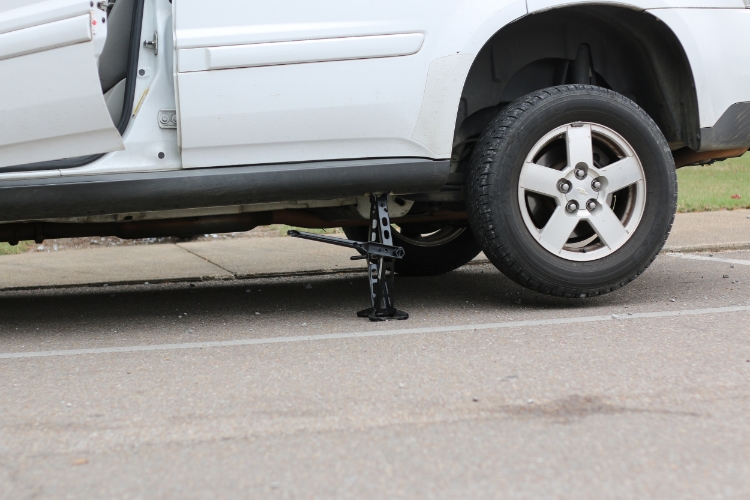Eric Wiggins
Reporter
Changing a tire can seem like a daunting task for someone who hasn't done it before. However, it is a very easy and safe procedure, as long as you know how to do it properly.
In the event of a flat, the first thing you need to do is make sure your car is on level, stable ground. A parking lot is ideal, but if there isn't one available, pull as far over onto the shoulder of the road as you can. While the car is still on the ground, use a tire iron to loosen the lug nuts. Do not fully remove the lug nuts until the car is completely off the ground.
The second step is to raise the car off the ground using a jack. Most jacks are in two pieces. The jack itself is shaped like a tiny scissor lift, while the crank is normally a metal rod with a hood on the end. The hook fits into an indentation or hole on the jack.
"You'll see an indention where [the jack] is designed to fit in. Usually, that'll be two notches cut in [the frame of the car], so it's obvious where it'll go. Sometimes, it'll be bright orange paint," said Braxton Maclean, a student with a lot of experience in flat tires. The notches or paint can be found on the underside of the vehicle. If you are still unsure where to place the jack, consult the owner's manual for your vehicle.
When the car has been raised enough that the tire is no longer touching the ground, remove the lug nuts entirely, then remove the flat tire. Put the spare tire in its place, then replace the lug nuts. Tighten the lug nuts before lowering the vehicle, then tighten them again after to ensure that they are as tight as possible. The flat tire, jack and tire iron can now be returned to the trunk of your vehicle or other storage space.
Please remember that on most cars, it is a spare tire and not a replacement. Standard spare tires are only rated for 50 miles per hour. It is highly recommended that once you have changed the tire, you visit a tire shop as soon as possible to have a professional repair or replace the damaged tire.
Paying attention to your tires and checking them often is the best way to prevent a flat or blow-out from occurring.
"Always keep an eye out for your tires. When you go to enter your car to drive it, take a look at your tires on at least your side of the car to keep you aware of if they are low or not. Get in the habit of just glancing at your tires every day," suggested Andy Dolan, owner of Euro Specialist in Steens, Miss.
However, you will eventually need to do a more thorough inspection of your tires.
"To visually inspect your tires, you need to turn your steering wheel all the way to the left. That way, you see the whole tire and not just the outside edge," Dolan said.
If you have a flat on campus, you can call campus police at (662) 241-7777, and they can refill the tire using an air compressor. However, officers cannot change your tire for you. This is one of the many reasons why it's important to familiarize yourself with the process of changing a tire, even if it means going out in a parking lot and practicing with a tire that isn't flat. You also need to make sure that if a flat were to occur, the tools you'll need to change a tire are in good working condition and stored within your vehicle.



